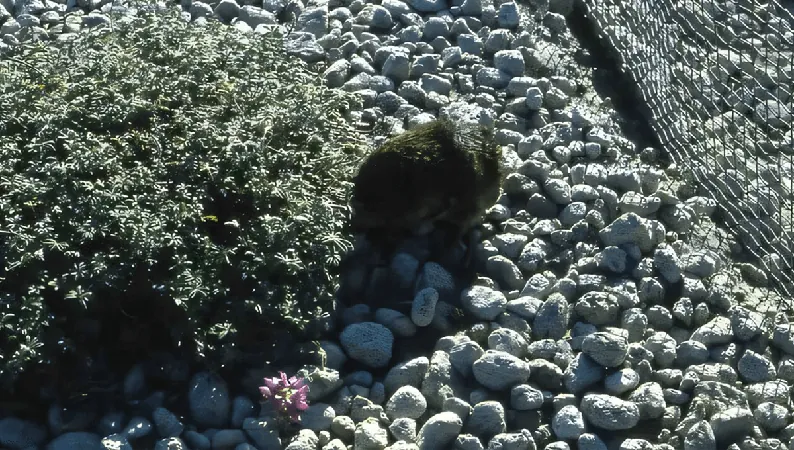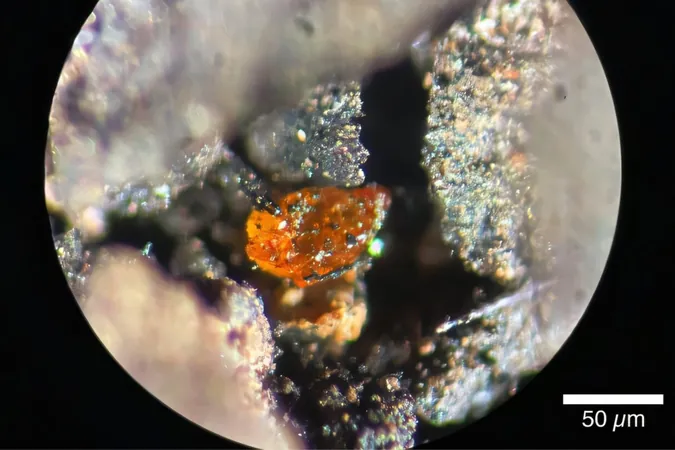
Incredible Discovery: A Day Trip by Gophers Leads to 40 Years of Ecological Revival at Mount St Helens!
2024-11-11
Author: Jia
Introduction
When Mount St Helens erupted cataclysmically in 1980, the once-vibrant landscape was reduced to a desolate expanse of lava, ash, and debris, leaving scientists wondering how long it would take for nature to reclaim the area. However, a bold team of researchers had a quirky yet innovative idea: introducing a small number of gophers for a single day!
The Challenge of Recovery
The aftermath of the eruption stripped the region of much of its plant life, which struggled to take root in the pumice-covered soil. While the surface lay barren and inhospitable, scientists noted that the underlying layers could still harbor vital microorganisms—bacteria and fungi capable of fostering the hard-won return of vegetation.
“Microbial life in the soil is essential for nutrient cycling and the overall health of ecosystems, especially in challenging environments,” explained microbiologist Michael Allen, a co-author of the study published on the gopher experiment. He emphasized that while certain weeds might survive, most plant roots are inefficient at retrieving necessary water and nutrients alone. “Mycorrhizal fungi serve as nature’s ‘delivery service,’ connecting plants to nutrients, water, and carbohydrates in exchange,” Allen elaborated.
The Gopher Experiment
Recognizing gophers as potential soil engineers, the team initiated their experiment just two years after the eruption. They transported local gophers into enclosed plots on the volcano, allowing these unsuspecting little workers to dig through the pumice for one single day. The results were nothing short of jaw-dropping.
Impressive Outcomes
Fast forward six years, and where gophers thrived, over 40,000 plants flourished, starkly contrasting the mostly barren surroundings. But even more astonishing? Four decades later, researchers returned to the site to discover how much lasting impact those little critters had made.
“Gopher-affected plots boasted not only a greater diversity of plants but also richer bacterial and fungal communities compared to ancient forests nearby,” the research team stated, highlighting the interconnectedness of life within this revitalized ecosystem. They even unearthed a more varied population of fungi in these long-term gopher habitats than in areas that had undergone clear-cutting before the eruption, such as Bear Meadow.
“I certainly didn’t expect that just throwing a gopher into the mix for one day could yield such profound and lasting effects,” Allen mused.
The Role of Fungi
Despite the astonishing contributions of gophers, the true unsung heroes behind this ecological revival were the fungi. Initially, scientists feared that muddled pine and spruce forests wouldn’t recover quickly due to ash-laden needles. Contrary to expectations, these trees began regrowing almost immediately after the eruption, aided by their resident mycorrhizal fungi that efficiently mobilized nutrients from the fallen needles.
“Compared to a nearby clear-cut area devoid of that organic nutrient layer, the difference is striking,” said Emma Aronson, an environmental microbiologist and co-author of the study. “Where the forest had survived, the clear-cut areas remain lifeless.”
Conclusion
This unique tale of nature, innovation, and resilience not only showcases the profound relationship between species but also emphasizes the untapped potential for small, seemingly inconsequential actions to catalyze monumental environmental changes. So, the next time you see a gopher, remember: it once played a pivotal role in reviving an entire ecosystem!





 Brasil (PT)
Brasil (PT)
 Canada (EN)
Canada (EN)
 Chile (ES)
Chile (ES)
 España (ES)
España (ES)
 France (FR)
France (FR)
 Hong Kong (EN)
Hong Kong (EN)
 Italia (IT)
Italia (IT)
 日本 (JA)
日本 (JA)
 Magyarország (HU)
Magyarország (HU)
 Norge (NO)
Norge (NO)
 Polska (PL)
Polska (PL)
 Schweiz (DE)
Schweiz (DE)
 Singapore (EN)
Singapore (EN)
 Sverige (SV)
Sverige (SV)
 Suomi (FI)
Suomi (FI)
 Türkiye (TR)
Türkiye (TR)